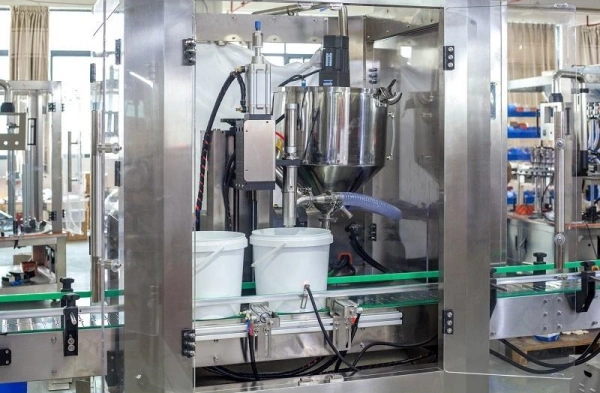Table of Contents
Hey there! If you’re looking into pail filling equipment, you’ve probably already realized that one of the biggest decisions you’ll make is whether to go with a pail filling machine that’s semi-automatic or fully automatic. Honestly, it’s not about which one is “better” – it’s about which one is right for your specific operation. Picking the wrong system can really mess with your efficiency and budget. So, let’s break it down together!

Core Difference: The Balance Between Human Resources and Automation
Semi-Automatic Pail Filler
Okay, so a pail filling system that’s semi-automatic is kinda like having a super-reliable assistant. It needs a bit of help from you! Here’s how it usually works:
- An operator places the empty pail.
- The machine fills it precisely (often triggered by a foot pedal or button).
- The operator then removes the full pail and might handle capping too.
So yeah, the machine handles the precise part, but the operator is still needed. It’s perfect if you’re not running 24/7 and still want a lot of flexibility.
Fully Automatic Pail Filler
Now, a fully automatic pail filling machine is a whole different beast. Imagine a system that just… does everything. Empty pails come in on a conveyor, get filled, capped, weighed, and shipped out without anyone touching them. Wow, right? It’s like having a whole team working without coffee breaks!
How to Choose? Four Key Decision Factors
1. Production Volume & Capacity Needs
If you’re filling dozens of pails an hour – and not running round-the-clock – a semi-automatic pail filling machine is probably plenty. But if you’re dealing with hundreds or even thousands a day? Oh boy, you’ll want to go fully automatic. No question.
2. Initial Investment & Budget
Alright, let’s talk money. Semi-automatic systems are way easier on the wallet upfront. Fully automatic ones? Yeah, they require a serious investment. But remember – they can save you a ton on labor costs over time.
3. Labor & Associated Costs
Do you have plenty of staff? Then semi-auto might work. But if you’re struggling to find workers – or just want to free up your team for more important tasks – automation could be a lifesaver.
4. Flexibility & Product Variety
Switching products often? Semi-auto systems are super easy to adjust. Fully automatic lines are more rigid – great for high-volume production of the same thing, but not so much for custom orders.
Summary: So Which One Should You Go For?
| Aspect | Semi-Automatic | Fully Automatic |
|---|---|---|
| Initial Cost | Low | High |
| Labor Needed | One Operator | Minimal |
| Best For Volume | Low to Medium | High to Very High |
| Flexibility | High (easy to change) | Low (dedicated line) |
So, what’s the verdict? If you’re a small or mid-sized business with diverse needs, a semi-automatic pail filling system is probably your best bet. But if you’re a large manufacturer with crazy-high output needs? Then yeah, fully automatic is the way to go.
Q&A: Your Pail Filling Questions Answered
Q: Can a semi-automatic pail filling machine handle different pail sizes?
A: Absolutely! Most semi-automatic pail filling equipment is super easy to adjust. You can switch between sizes in minutes – no hassle.
Q: How much can I really save with a fully automatic system?
A: Over time, tons – especially on labor. But remember, the upfront cost is significant. It’s an investment that pays off best in high-volume settings.
Q: Which type requires more maintenance?
A: Well, fully automatic systems are more complex, so they might need more attention. But honestly, both types are pretty reliable if you maintain them properly!
Further reading:Check out our detailed guide on how to choose a pail filler for more information!

